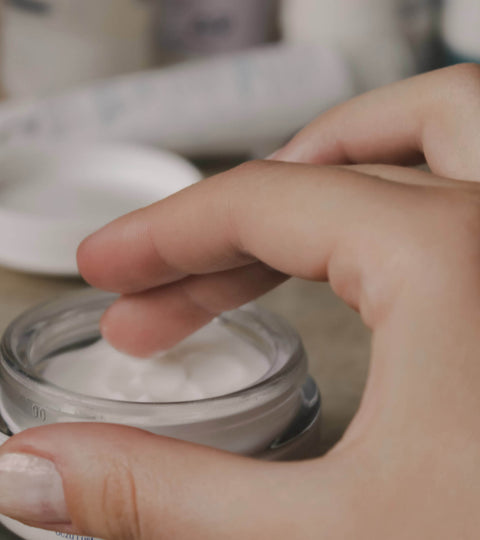Do Cannabis Topical Creams Get You High?
No, a cannabis topical cream cannot get you high. However, marijuana cream can be quite effective for treating a wide range of medical conditions.
Introduction to THC Lotion: Does It Work?
There are many different ways to utilize the medicinal attributes of cannabis.
A cannabis topical balm (e.g. cannabis-infused salves, lotions, oils) is an excellent choice for targeted relief of certain conditions.
Additionally, because cannabis topical creams are directly absorbed by the skin rather than processed through the liver or bloodstream, these marijuana creams provide the added benefit of being non-psychoactive.
Before you rush to your local dispensary or other shop that sells cannabis topical balms, read on to learn the facts about cannabis topical creams.
What’s In Marijuana Cream?
There are three main types of marijuana creams: full spectrum, broad spectrum, and CBD isolates.Full-spectrum cannabis topical creams include a wide assortment of cannabinoids and terpenes.
Broad-spectrum cannabis topical balms feature a similar blend of cannabinoids and terpenes, except that THC is excluded from the mix.
CBD-isolate cannabis topical balms include no cannabinoids other than cannabidiol (CBD).
Many marijuana creams include various oils, herbs, and vitamins for additional therapeutic benefits.
It’s a good idea to examine a cannabis topical balm's product label prior to purchase so that you can know exactly what it contains. You may also want to examine a cannabis topical cream's lab reports in order to analyze its specific terpene and cannabinoid profile.
What Type Of Marijuana Cream Should I Use?
CBD (alongside THC) is the most popularized of the many cannabinoids present within the cannabis plant. However, that does not mean it is the only cannabinoid that will provide relief of your medical symptoms. Depending on the particular health-related challenge, other cannabinoids may be more appropriate to treat your condition.
Regardless of your medicinal issue, a full-spectrum cannabis topical cream is usually a better option than a CBD-isolate cannabis topical cream. One of the main reasons this is so is because of the entourage effect, where different cannabinoids work together synergistically to amplify the benefits of each.
For those who do want to start with a CBD-isolate cannabis topical balm, it is important to note that the best results tend to be achieved with a moderate dose. Applying too much or too little of the cannabis topical balm to your affected areas may result in somewhat less relief of your symptoms.
As with all cannabis-based products, we strongly recommend starting with a small dose. If that is effective, great! If not, try gradually applying more of the marijuana cream to your affected areas until you experience relief.
If you would benefit from tracking your results, consider one of our Patient Journals.

How Does Cannabis Topical Cream Work?
Your skin absorbs the topical marijuana cream after it is applied, leading to a reduction or elimination in your pain or discomfort. This happens because the cannabinoids in topical marijuana creams bind to the cannabinoid receptors present throughout your body.Many people choose to use cannabis topical balms because they are generally non-psychoactive. If that is an important factor for you, be aware that some transdermal cannabis patches may have the potential to get you high. If you are not seeking that particular type of experience, consider other types of cannabis topical creams.
Which Conditions Are Cannabis Topical Balms Good For?
Cannabis topical balms are ideal for treating muscle or nerve pain, arthritis, inflammation, and skin conditions like eczema and psoriasis.Excellent results have also been noted for menstrual cramps, headaches, and migraines, although scientific validation for treating these issues through the use of topical marijuana creams has not yet been confirmed.
How To Get The Best Results with Cannabis Topical Cream
Unfortunately, some disreputable actors do know how to make topical CBD oils. Between the allure of its incredible sales potential and a dearth of federal oversight, some low-quality cannabis topical creams have seeped into the market. Fortunately, there are a few things that you can do to avoid purchasing ineffective topical marijuana creams.Many places that sell cannabis topical balms offer free samples. If that is an option, consider trying the marijuana cream in store. Since relief tends to be felt within as little as ten minutes when using cannabis topical cream, you might be able to quickly have a good idea of whether a product is a match for your needs.
Cannabis topical balms can bring near-instantaneous relief. However, consistent application usually leads to better results, particularly for long-term challenges.
Laurel “Lo” Friesen, who is the founder, CEO, and chief extractor at Heylo, explains that “It’s...preventative maintenance. For example, people who have arthritis in their hands who use [cannabis topical balms] on their hands every day are going to have less pain, less inflammation. They’re going to have less pain in their hands over time than people who use it to treat [their symptoms as they arise].”
Also, we recommend that you apply topical marijuana cream during times where you aren’t exerting much physical energy, such as when resting at home or at your desk in the office. This allows the topical marijuana cream to fully be absorbed instead of being sweated out or accidentally rubbed off.
Conclusion
Let's get real simple here about THC lotion. Does it work? Clearly, it does. And one day we might even share with you how to make topical CBD oil. But that's for another post...
If you’ve been struggling with pain, inflammation, or skin conditions, you may want to consider giving cannabis topical cream a try and testing your results with a Patient Journal.

